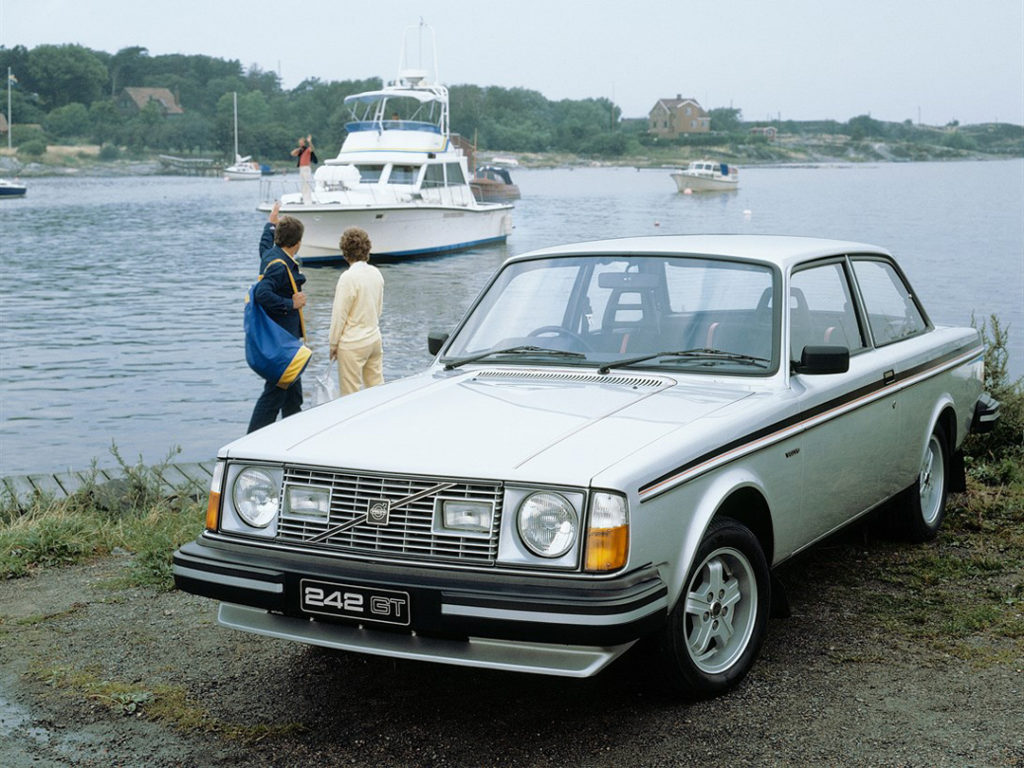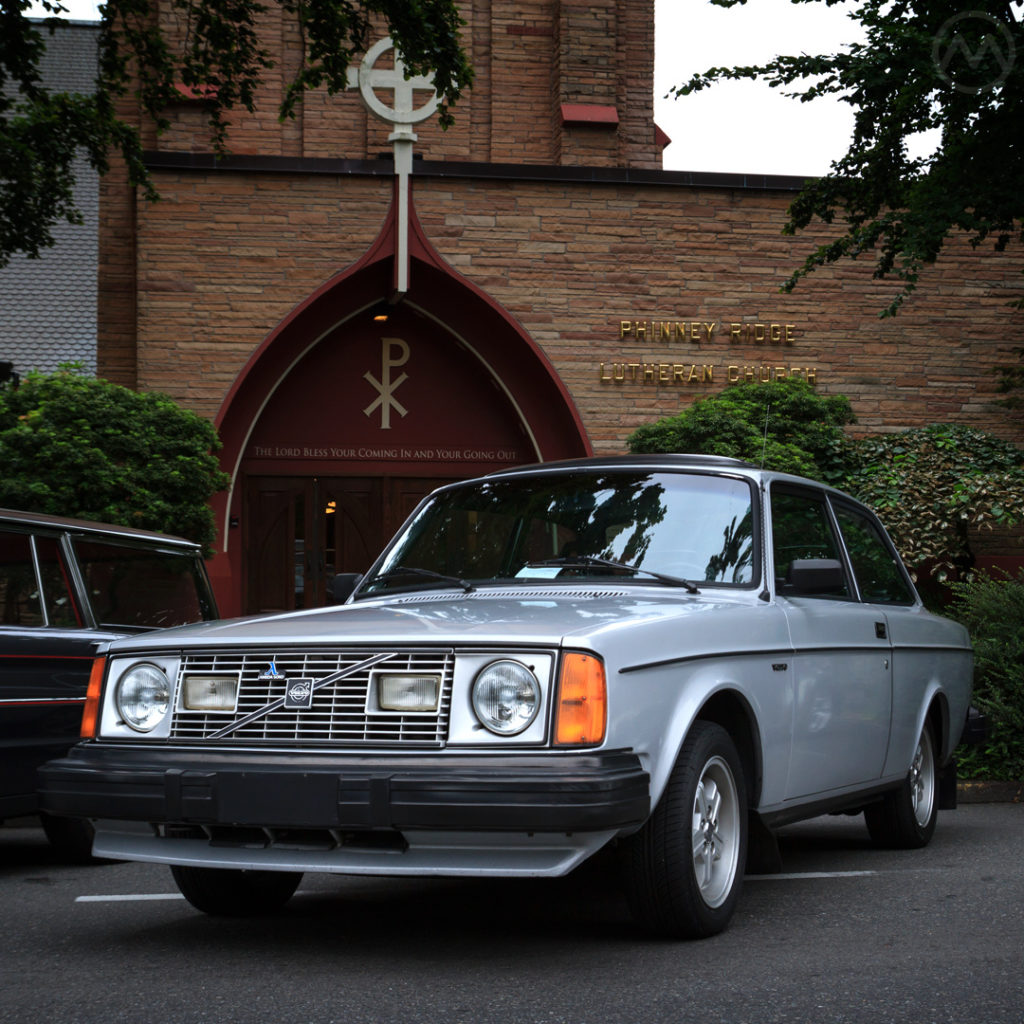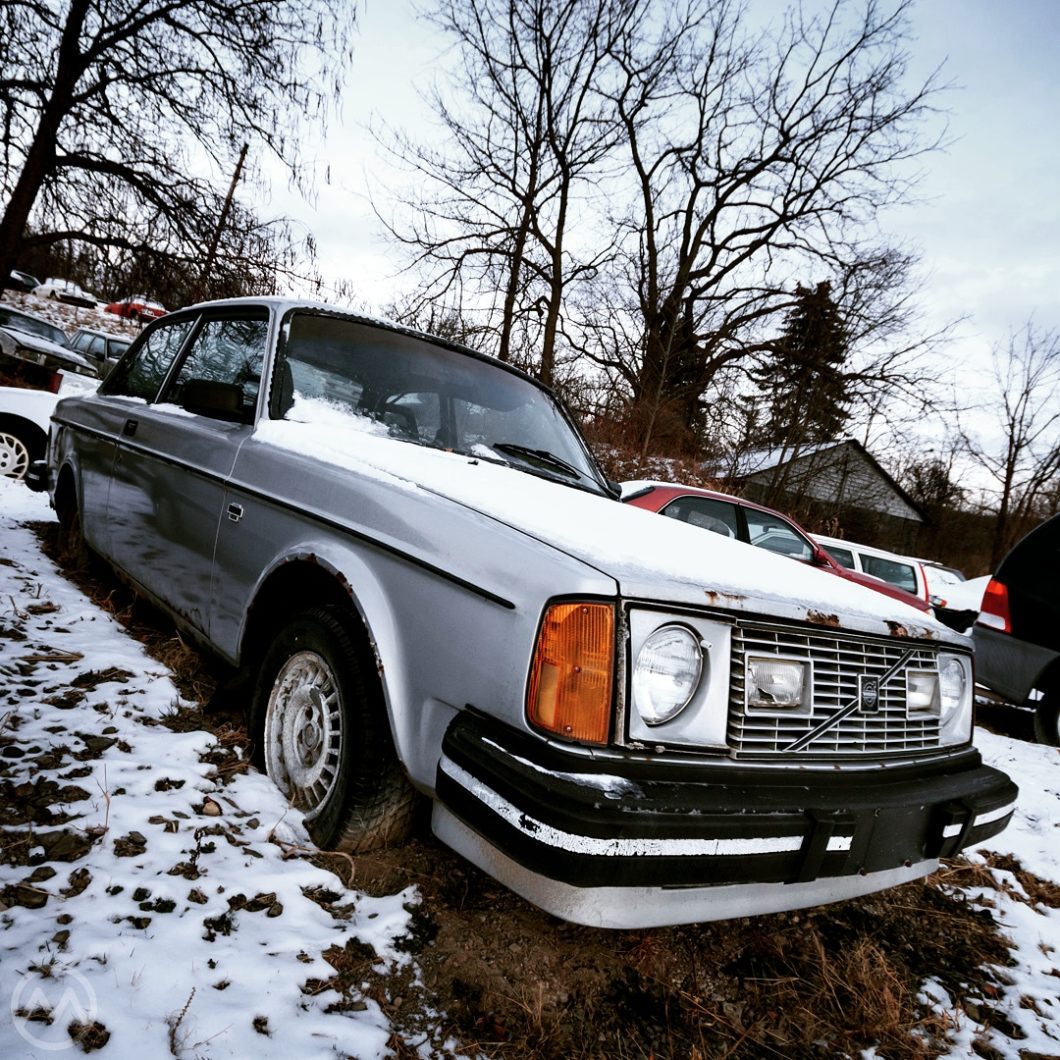You never hear about it now, but the mid-to-late 1970s were a really rough time for Volvo, both in Europe and North America. One response to trying to improve things was the short-lived but flamboyant (for a Volvo) 242 GT. More on that in a bit.
In Europe, the company’s 1974 acquisition of DAF proved a major money drain, and the new 200-series cars, though later beloved, were not so warmly received when they were new. By the fall of 1976 a huge inventory of unsold 200-series cars and rebadged DAFs sat on dealer lots, mostly in Europe (the Dutch-built Volvos were not sold in North America).
It wasn’t much better across the pond – sales also plummeted in the USA that year.
After growing consistently for almost 20 years, Volvo’s U.S. sales reached 60,000 cars in 1975 – but fell to just over 40,000 in 1976. Part of that was Americans buying larger cars again as memories of OPEC faded, and part of it was that some early 200s were not built to Volvo’s earlier standards – and they were ever costlier.
Currency swings made its cars more expensive in the U.S. and Volvo had been planning for a workaround. They’d spent almost $4M on a site for a factory in Chesapeake, Virginia in 1973 and had even broken ground on the facility. Faltering of sales forced the project (and much of the investment) to first be postponed, then abandoned altogether – along with millions of dollars poured into the site up to that time.
That December, the company announced it would scale back production and furlough thousands of workers in Sweden. Things did not really improve in 1977 – a year when Saab rejected a potential merger after months of negotiations.
So it was not all that surprising that Volvo was casting around for ways to get people more excited about Volvos. Given the financial strains of the day, it had to use what it had on hand to do so. It also had to offer some alternative to newer rivals like the BMW E21.
Adding Excitement
Just a few years earlier, Volvo had both the 1800ES sportwagon and the 142 as its “exciting” cars. The 1800ES, an outgrowth of the long running 1800 sports car, was well liked but departed in 1973, a victim of U.S. regs.
The 142 might have been a 1960s breeze block to look at and sometimes a very pedestrian 2-door sedan, but it wasn’t so fundamentally different in looks and concept from the BMW 2002 or Datsun 510 in the 1960s and early 1970s.
Volvo had considered replacing the 100-series with a larger car slated for 1972-73, but that project (P1560) evolved into the Volvo Experimental Safety Car (VESC) program, and was then shelved. When it came time to replace the 100-series, Volvo evolved it into the 200-series by using elements of the VESC idea.
That was good for safety – the 200 earned high marks for durability and crashworthiness – but not for aesthetics or image. A big black shovel-nosed look characterized the front of the four-cylinder 240 series, as did huge black impact bumpers front and rear and little ornamentation.
The silhouette of the 142 remained in the new-for-1975 242/262 2-door sedans, but their sober looks and quiet manners were described at the time as “substantial, but not glamorous.” That could have been applied to the whole Volvo line at the time. This, some at Volvo felt, was part of the sales problem.
To juice up the lineup, a pair of new 2-doors would bow for 1978. One was the Bertone-bodied, luxury 262C, a pricey range-topping halo car in the mold of the Lincoln MkIV. The other was arguably the most interesting for ordinary consumers – the 242 GT. Each largely reused components that already existed and added to the recipe.
242 GT
The GT took the regular 242 package and added gas-pressurized shocks and chunky stabilizer bars, plus all-around discs, the forward ones vented. The car got a visually unique front end with fog lights, an air dam, and 14” alloys.
Inside, they got unique dashboards and all-black interiors with vibrant red stripes. The whole thing was clothed in metallic Mystic Silver paint, blackout trim, and a 1970s tape stripe job.
I know what you’re saying: “I don’t see any tape stripes here.”
Mystic Silver didn’t hold up too well and many have been repainted. The decals are difficult if not impossible to find now, though a few owners have had their own replacements made. In other markets, the car was also available with a black exterior and slightly different stripes. It was particularly popular in Australia.

In 1978, all 242 GTs used the B21F (F is for Federal) 2.1L four just like the regular 240s, but in 1979 everybody except U.S. customers got a heartier B23. The cars had a four-speeder with overdrive – shared with the regular 240s. The international market cars were substantially quicker than the U.S. market one, where the package remained mostly handling and appearance based.
Though no faster than the regular 242 in a straight line, the GT looked good and was definitely sharper to drive. It earned good praise from reviewers at the time, who characterized it as the best driving car in the lineup and the first really interesting driver Volvo had fielded since the transition to the 200 series.
Passing the Torch
The 242 GT continued in the USA into 1980, by which time sales were beginning to recover properly. Neither the 262C nor the 242 GT were big sellers, but they did add a little shine to the regular 240 and (slower selling) 260 models.
In 1981, Volvo added the 240 GLT series, which inherited most of the under-the-skin mechanical upgrades of the GT. The upgraded pieces were now available in 4-door sedans and wagons as well as the 2-door. Most of this news, however, was overshadowed by the U.S. debut of a federalized version of the B21FT Turbo engine.
Not coincidentally, 1981 was the year in which Volvo’s U.S. sales rebounded past their 1975 peak, to about 64,500 cars.
Now the Turbo 242 GLT could deliver the speed promised by the earlier GT, though it did so in a less distinctive package. Turbo 240s would get progressively faster – graduating to the B23FT – in the next couple of years, though sales of the 2-door sedan began to fade. The 2-door body, the most coveted later on, was dropped after 1984.
Thanks to Joe O. for the photo op on the top picture.


